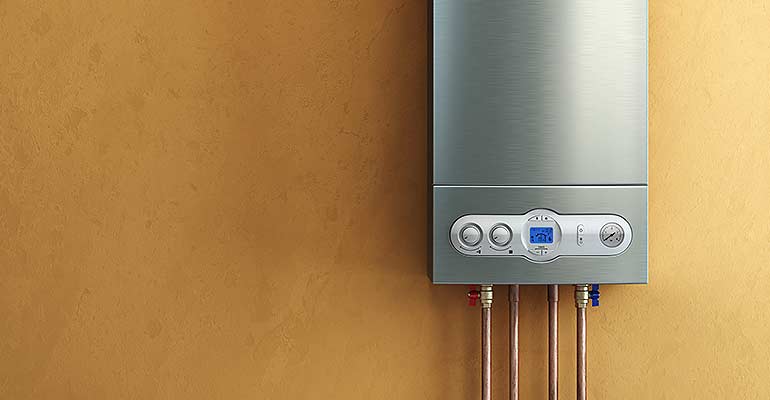Here underneath you will find a good deal of helpful insight relating to Water Heater Maintenance Tips You Can't Afford to Forget.

Hot water is important for day-to-day convenience, whether it's for a revitalizing shower or washing meals. To ensure your warm water system runs efficiently and lasts longer, normal upkeep is essential. This post gives useful tips and insights on just how to keep your home's warm water system to stay clear of interruptions and costly fixings.
Introduction
Keeping your home's hot water system could seem complicated, but with a couple of straightforward actions, you can ensure it operates efficiently for several years ahead. This overview covers whatever from understanding your hot water system to DIY upkeep ideas and understanding when to hire specialist help.
Relevance of Maintaining Your Hot Water System
Regular upkeep not only extends the life expectancy of your warm water system but additionally ensures it operates successfully. Disregarding upkeep can lead to decreased effectiveness, greater power costs, and also premature failure of the system.
Indications Your Warm Water System Demands Upkeep
Understanding when your hot water system requires interest can stop significant concerns. Keep an eye out for signs such as irregular water temperature level, odd noises from the heating system, or rusty water.
Flushing the Hot Water Heater
Flushing your water heater eliminates sediment accumulation, boosting efficiency and extending its life.
Monitoring and Changing Anode Rods
Anode rods stop rust inside the tank. Checking and changing them when broken is essential.
Complex Concerns Needing Specialist Assistance
Examples include significant leakages, electric issues, or if your water heater is constantly underperforming.
Regular Professional Maintenance Benefits
Expert upkeep can consist of complete inspections, tune-ups, and making certain compliance with safety criteria.
Examining and Changing Temperature Setups
Changing the temperature level settings makes sure optimum efficiency and safety and security.
DIY Tips for Upkeep
You can carry out several maintenance jobs on your own to keep your hot water system in leading problem.
Looking for Leaks
Frequently evaluate pipes and links for leaks, as these can cause water damages and higher expenses.
Comprehending Your Hot Water System
Before diving into upkeep tasks, it's handy to understand the fundamental elements of your hot water system. Normally, this includes the hot water heater itself, pipelines, anode rods, and temperature controls.
Regular Monthly Maintenance Tasks
Normal month-to-month checks can aid catch small problems before they intensify.
Testing Pressure Relief Valves
Examining the pressure relief valve ensures it works correctly and stops extreme stress accumulation.
Protecting Pipes
Insulating warm water pipes lowers warm loss and can conserve power.
When to Call an Expert
While do it yourself upkeep is valuable, some concerns need professional competence.
Conclusion
Normal upkeep of your home's hot water system is necessary for effectiveness, long life, and cost savings. By adhering to these ideas and understanding when to look for specialist aid, you can ensure a reliable supply of warm water without unanticipated interruptions.
How to Maintain an Instant Hot Water Heater
Before tinkering with your hot water heater, make sure that it’s not powered on. You also have to turn off the main circuit breaker and shut off the main gas line to prevent accidents. Also turn off the water valves connected to your unit to prevent water from flowing into and out of the appliance. 2. When you’re done, you have to detach the purge valves’ caps. These look like the letter “T†and are situated on either side of the water valves. Doing so will release any pressure that has accumulated inside the valves while at the same time avoid hot water from shooting out and burning your skin. 3. When the purge valves’ caps are removed, you have to connect your hosing lines to the valves. Your unit should have come with three hoses but if it didn’t, you can purchase these things from any hardware or home repair shops. You can also get them from retail stores that sell water heating systems. Read the user’s manual and follow it to complete this task properly. When the hosing lines are connected, open the purge port’s valves. 4. You should never use harsh chemical cleaners or solutions when cleaning your unit. Make use of white vinegar instead. It should be undiluted and you’ll probably use about 2 gallons. 5. Now flush your water heater. This task should probably take about 40 minutes. We can’t give you specific directions for this because the procedure is carried out depending on the type, model and brand of your heater. With that being said, refer to the user’s manual. 6. When you’re done draining the unit, you have to turn off the purge port valves again. Remove the hosing lines that you earlier installed on each of the water valves. Put the valve caps (purge port) back in their respective places and be very careful so as not to damage the rubber discs that are found inside these caps. 7. Now that everything’s back in place, check your user’s manual again to find out how to reactivate your water heating system. 8. Once it is working, turn one of your hot water faucets on just to let air pass through the heater’s water supply pipes. Leave the tap on until water flows smoothly out of it. https://www.orrplumbing.com/blog/2014/september/how-to-maintain-an-instant-hot-water-heater/

As a fervent reader on Tips on Maintaining a Water Heater, I thought sharing that piece of content was appropriate. You should take the time to share this page if you enjoyed it. Many thanks for your time. Kindly come by our site back soon.
Browse Our Site